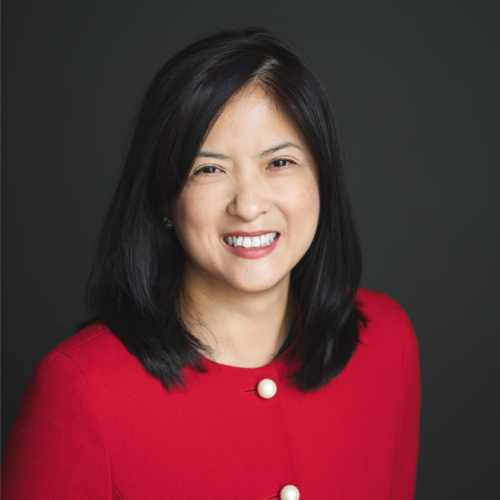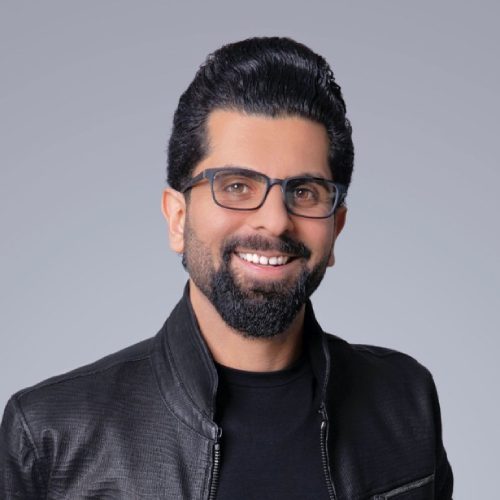How blockchain technology is opening up fractional investing
Most investors will be familiar with fractional investing through public stock exchanges, whether that’s investing $10 in tech shares or buying into an investment fund, whereby an individual takes a fractional stake in a portfolio.
At its core, fractional investing means an investor can own less than a single share of a company or entity.
But with the emergence of blockchain technology, over the last two years, “fractional investing has finally arrived in private markets”, says ADDX CEO Oi-Yee Choo, broadening the range of assets available for investing as well as opening up these markets to typically underserved segments of society.

ADDX CEO Oi-Yee Choo
ADDX is a global private market exchange headquartered in Singapore that leverages blockchain technology to provide access to alternative assets such as private equities, hedge funds, unicorns, venture capital, private credit, real estate, debt and structured products.
“Many of these assets are unheard of or unfamiliar to investors who are participating for the first time,” Choo says.
On the ADDX platform, a diverse range of assets can be bought and sold at a minimum buy-in of $5,000 instead of $1 million. Choo says ADDX is one of the players driving this market transformation and the use of blockchain and smart contract technology has enabled the change.
For example, alternative assets can include luxury investments, such as wines or watches. ADDX recently listed a portfolio of vintage Burgundy wines. The indicative worth of each bottle ranges from hundreds to thousands of dollars. Fractional investing means investors can take a stake in these assets rather than buying them outright. “Without fractionalisation enabled by blockchain, it would have been expensive and difficult for any individual investor to build a similar wine portfolio,” Choo adds.
As such, fractional investing allows investors to build a diversified portfolio not just across stocks and bonds, but also in both public and private markets. “This helps investors improve the resilience and long-term returns of their wealth holdings,” Choo adds.
Drink the rich
Traditionally, luxury investments such as art and wine have, by and large, only been accessible to the ultra-rich because building a diversified portfolio of such assets requires high start-up costs.
“Just as an investor might choose a variety of stocks for diversification, wine investors would want to buy a variety of wines to avoid concentration risk from the performance of one vintage or producer,” Choo says.
Fractional investing could benefit such markets even further by opening up new streams of capital from a mass affluent class of investors. “What is needed to make this happen is an infrastructure and ecosystem that can manage the life cycle of the product in a regulated manner, from distribution to post-trade,” Choo adds.
And there’s no doubt retail investors are eager to invest in alternative assets such as art, wine and real estate. “We have also noticed the appetite from these markets to have more retail investment on the side of traditional institutional capital,” Fintor CEO Farshad Yousefi says. The biggest barrier of entry for retail to come into these markets is high capital requirements, which fractional investing can directly address.

Fintor CEO Farshad Yousefi
On Fintor, a mobile platform for buying and selling fractional equity shares in real estate properties, investors are able to buy individual shares of a single property, in much the same way one would buy a share of a company on the stock market.
“Millions of members of society are finally able to participate in what has been historically closed off. Greater membership benefits the verticals by introducing fresh capital and offering more efficient liquidity,” Yousefi says.
Share prices for a property on the platform generally start at around $5 to $50, democratising access to real estate investment. “Traditionally, in real estate you have to research properties, apply for a loan, get approved for a loan, deal with the title company, navigate closing and so many more steps in order to start investing. With Fintor, the barriers are removed,” Yousefi says.
Appetite for risk
Fractionalisation also allows investors to make multiple bite-sized investments over time to lower market timing risk and to benefit from dollar cost averaging.
“In an ideal world, most assets should be available in fractional units,” Choo says. This would give investors maximum flexibility when deciding to take part in any opportunity. Fractional investing allows investors to “right-size” an investment for their current portfolios, based on their risk appetite and conviction level on the underlying investment thesis.
Before fractionalisation was enabled in private markets by players such as ADDX, private market opportunities typically had a minimum investment size between $250,000 and $1 million.
The reason many investments are still only accessible at a high minimum size is because the infrastructure needs to be built to enable fractionalisation at scale with trading.
This infrastructure has been built for public markets, as stock exchanges and brokerages have made large investments over many years to enable fractionalisation. The same investments have not been made in private markets, because of the fragmented and complex nature of private market products. “But with blockchain, that infrastructure can now be built in a much more cost-efficient manner,” Choo says.
With blockchain and tokenisation, the same private market investments can be made available for a minimum of $5,000. Furthermore, blockchain-powered exchanges allow these investments to be traded, overcoming the lock-up period. “These changes make it feasible for individual investors to take part in private markets, which were previously only open to institutional investors,” Choo adds.
“Blockchain is a very useful technology for setting up fractional platforms,” Yousefi says. “The industry is waiting to gain more clarity from regulators on standards and compliance in order to start adopting blockchain.”
Like any investment, fractional investments carry risk. However, since shares are much smaller, and allow investors to further diversify across multiple properties, risk has the potential to be reduced. “This can be very attractive to beginner investors who are trepidatious of traditional investing and want to test the waters with smaller shares before taking the leap,” Yousefi explains.
A recent report from ADDX and global consulting firm BCG forecasts that asset tokenisation will expand into a $16 trillion business opportunity by 2030. “The growth is expected amid a crypto winter, which is prompting capital to focus on more viable blockchain use cases,” Choo believes. “There is definitely great potential for growth.”
Reaping rewards
For fractional investing to be done at scale in private markets specifically, tokenisation is useful for keeping costs at a commercially viable level. But traditional financial institutions running legacy tech may face barriers.

Leveraging blockchain tech, every UK citizen could own part of Lord Byron in Albanian Dress, for example
“If these institutions are fractionalising investments without the use of technology, they may not be able to lower minimum sums sufficiently, or they may not be able to do so without charging high fees,” Choo says.
Investor education and raising awareness on tokenised securities is also key. “Regulators have helped in this regard,” Choo says. In Singapore, the Monetary Authority of Singapore (MAS) has taken a progressive stance on tokenised securities, stating that such securities would be regulated under the Securities & Futures Act, in the same way as traditional securities such as stocks and bond certificates.
“However, not all regulators are as open to tokenised securities as the MAS, and that could mean more time before the trend can become truly global in nature,” Choo adds.
The opportunities of the technology that underpins fractional investing are huge. Imagine a nation with a sovereign art collection decided to gather all the collected art works owned by the state into a portfolio. It could then fractionalise the ownership of those assets using blockchain technology and distribute the shares or units to citizens on the blockchain.
If the portfolio was subject to expert valuation, then citizens would know the value of their shares. “Trading could be allowed, to give citizens the chance to monetise their share of the portfolio,” Choo says. A portfolio manager could also allow art pieces to be exhibited for a fee in international museums to earn a return that can then be distributed to unit holders.
Call it a Sovereign Art Fund and people could reap the rewards of the collective cultural wealth of their nation. Logistics and cost no longer need to restrict open access for everyone to participate.
“This advancement, distribution and utilisation of fractionalised ownership through shares plays a critical role in truly democratising the general public’s participation,” Yousefi says.











































